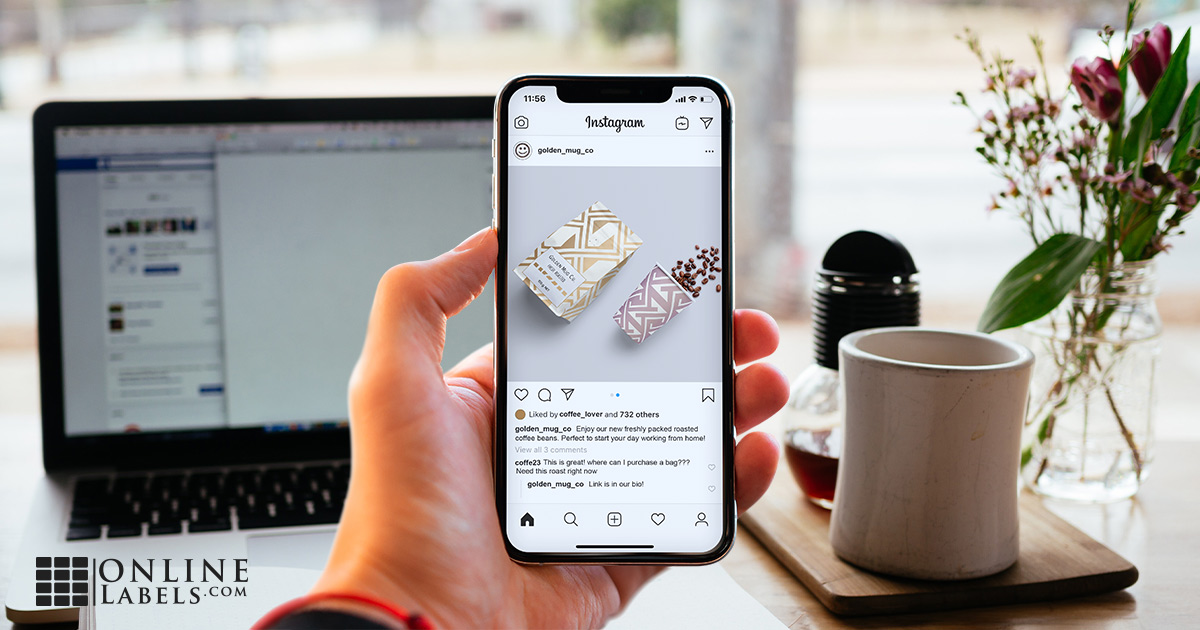How To Keep Business Moving When You're Stuck At Home

Here are things entrepreneurs can do to make productive use of time away from their shop. Watch the following video for a quick summary or dive into the full content in the article below.
Focus On Product Development

Try experimenting with new products. Test out different scents, colour schemes, designs, and/or recipes. Customers, especially now, are looking to support small businesses. Connect it with current events too – include lavender for stress-relief during this trying time, etc.
If you're in the bath and beauty industry, see how you can switch it up while still using your existing supplies. See what products you can make with beeswax, soy, and honey.
If nothing comes to mind right away, read our guide on how to develop ecommerce products. It covers product ideation strategies to help you think outside of the box.
Update Your Website

Spending time on your website is a great way to build consumer confidence and present a more professional appearance. It's often a back-burner project, but that makes now the perfect time to tackle it! Listed below are some high ROI (return-on-investment) projects to focus on:
Beef Up Product Descriptions
Consumers want more information, but they also want it in an easily digestible format. Consider including all the pertinent details, broken up into several small paragraphs. Talking points include:
- What it is – Mention your product type again for customers who skim, even if it's listed as the title of the page.
- Colour/scent/fabric details – Describe everything in words since consumers can't see, smell, or touch your product for themselves.
- Size specifications – Include any measurements or dimensions that could influence a purchasing decision.
- Ingredients or production materials – List everything. Society has become extra-conscious of what goes on, in, or near our bodies, so it's best to anticipate their questions.
- Use instructions – Spell out best practices for your product, even if they're self-explanatory. For lotions, describe times when your skin is most receptive. For candles, explain how you need to let it burn the first time until the entire top layer melts, etc.
Learn more about marketing copywriting to create the most informative product pages on the internet.
Improve Product Photos
Online shopping has become highly visual. When faced with a sea of similar products, consumers tend to go based on pictures and price (we'll expand on this in a moment). Make sure your product photography conveys a high level of quality and professionalism.
Employ these tricks and advice to get the best shot:
- Determine your background – Consider the rules of your sales platform before staging your setup. Amazon, for example requires a white background for your main product image. But on your own website or for subsequent photos, the world is your oyster.
- Set the scene – Choose a scene that makes sense and highlights your product. Grab props, show different scenarios or environments, and more. People want to visualise how your product will fit into their life.
- Use professional equipment – DSLR cameras and some of the newer phones on the market are great options. They produce high-quality images that look crisp and clear images.
- Use mockups – There are plenty of mockup libraries online that can work for your shop. With some basic photo-editing skills, you can build consistency across listings. For example, if you're selling art prints, consider finding a mockup of a picture frame on a bookshelf.
Check out more product photography tips for beginners. You should also consider adding new photos to your listings once you've got the basics down. Consider these great shot ideas for your website:
- In-use – Match a photo to the instructions you recommend in your product description.
- Comparisons – Set your product next to a well-know item of similar size and stature to help consumers get a feel for its dimensions.
- Close-ups – Showcase the glossy sheen of your stickers or the subtle texture in your fabric.
- Angles – Illustrate how thick your bar of soap is from the side and top, as opposed to just lay-flat or front-facing shots.
- Variations – Let customers see the different colours or sizes if your website offers variations.
Reevaluate Your Pricing Strategy
Are your sales lower than you expected or is product flying off the virtual shelf? Are you losing money on each sale, just breaking even, or making a decent profit? If you're dissatisfied with your financial progress, it may be time to raise or lower prices.
Run the numbers. It'll help you break down the cost of materials, labor, postage, fees, and additional expenses to give you a good baseline. Then, play around with the markup and profit margin settings to chose a number you're happy with.
You may discover your prices were higher than they needed to be, thus discouraging shoppers. Or perhaps it was too low and you have more wiggle room to raise prices than you thought.
At the end of the day, make sure selling your craft is worth ie market to you. Read these product pricing strategy tips to pick a price that makes you happy, reflects the quality of your product, and fits in with other products on the market in your category.
Review Your Return Policy
Returns are viewed as a good customer service practice. But you can't offer this benefit without first outlining your policies. A good policy should include:
- Statement about exchanges – Exchanges can be more difficult logistically, so many small businesses choose not to offer them. If this is the case, explain your refund-and-repurchase policy. Keep in mind that for certain industries (clothing, for example) exchanges may be the most helpful option to customers.
- Permitted time-frame – You probably won't accept returns years after the purchase, so be clear with what you consider an acceptable return period. We've seen as little as 7 days and a much as 120.
- Return shipping – State who is responsible for the cost of return shipping. Some businesses subtract it from the refund while others cover it themselves or ask the customer to pay out-of-pocket.
Don't forget to link back to your policy from product pages. It can help instill confidence in your customers and promote purchasing. You should also note the policy for each platform you sell on, if you're using third-party marketplaces like Amazon and Etsy. Get more information about small business returns.
Create New Content
Take this time to draft up content for later. You'll be building up your arsenal for when things pick back up and downtime is a fleeting memory.
Generate Social Posts

Up your social media marketing game. Use photos from your website and content from your new product pages to create an endless supply of posts. Save them all in a folder and organise them using a content calendar so you're ready to put them to use.
Add To Your Blog
Blogs are an excellent way to keep customers engaged, humanise your small business, and draw traffic from search engines like Google. Give one (or all) of these topics a try and see what feels natural and entertaining:
- Small business – Detail your experience as a small business owner, how you got started, where you see the business going in the future, etc.
- Your personal life – Talk about what's going on in your life, with your family, what books you're reading, etc.
- Product details – Give customers insight into your product creation process, the ideation stage, how they benefit consumers, etc.
- Timely topics – Relate your products back to the season, upcoming holiday, or hot topic.
- Lists – Write top 10 lists of your favourite products, most incredible customer reviews, etc.
You can also go back and add to old blogs on your site, too. Explore more advice on spicing up your blog.
Collect Reviews & Testimonials
According to BrightLocal, 91% of people read online reviews and 84% of those trust online reviews as much as a personal recommendation. If you don't have a repository of customer comments, start gathering them with these methods:
- Email after purchase – Send an email after each product is delivered with a link for customers to submit a review.
- Surveys – Reach out to your entire customer base or only people within a specific sub-group and ask them to fill out a quick survey about their experience.
- Give them a ring – Get direct feedback by calling customers and asking them how they like your product.
- Q&As on your product pages – See if existing customers leave nice compliments in their questions about different products.
Once reviews start coming in, do you know how to handle them? Find out how to use reviews to grow your business and how to respond to negative feedback.
Redesign Your Product Labels

Your product and business have likely changed since you first designed your packaging and launched your products. Run through the following list of design tips to see if you can refresh your packaging for the better.
- Note your demographic – Think through the motivations of your prospective customers, what can you do to make them lean in to your product and make a purchase?
- Consider your label material options – Consider showing off your product with a clear label, using a "metallic label material" to imply luxury, or catching the attention of passersby with a glossy label.
- Play with the fonts – Make sure it's readable, above everything else. Overly script fonts or really small fonts are great in theory but not always in practice. Learn more about font selection.
- Add pictures – Help consumers understand your product faster with a close-up of the texture or an illustrative symbol to represent the flavor.
- Colour-code product lines – Keep your branding consistent by only changing the colours in each product label. Turn the same label yellow for banana-scented candles and red for strawberry.
- Update the content – Provide the right information to your customers. Explore what content should be on your product label.
Design can be tricky, don't be afraid to pass the baton to a professional if you're out of your element. See how you can find a graphic designer, or keep it in-house with Product Packaging From Concept to Completion.
Consider New Frontiers
If you're only selling in one or two places, there are a plethora of new opportunities out there. Read through this list to see where else you can launch your business to sell product:
Try New Consumer Marketplaces
Marketplaces come with built-in audiences so they're a great way to get in front of new consumers quickly. Business-to-consumer marketplaces worth looking into include:
- Amazon – One of the most popular online marketplaces for all types of goods.
- Etsy – The go-to site for handmade, artisanal goods.
- eBay – A big player in the clothing and use goods categories.
- Walmart – A favourite for affordable products.
- ArtFire – A place for international makers and indie businesses.
- craiglist – The online classifieds, somewhat less professional.
- Facebook Marketplace – A social platform for new and used items.
- indieCart – A marketplace for environmentally conscious brands and consumers.
Review the pros and cons of popular consumer marketplaces.
Check Out Wholesale Marketplaces
If you want to ink a deal with a big retailer, marketing to wholesale buyers is your next move. These business-to-business marketplaces can put you in front of the right people if you're trying to go retail.
- RangeMe – Buyers here include large corporations like Target, Ulta, and more.
- Faire – These buys are looking to fill their small shops and boutiques.
- FGvendors – One of the original sites in this category.
- Joor – A platform focused on fashion.
- NuOrder – A platform for large clothing companies like Nordstrom.
Evaluate if wholesale marketplaces are right for your business.
Build Your Own Website
Some platforms, like Amazon, control your customers. By going off on your own, you're in control. Look through the site builders below and see why shop owners should consider launching personal websites.
- Shopify – One of the biggest players in the DIY website sphere.
- Jumpseller – A strong option for non-native English speakers.
- Squarespace – A favourite for elegant design templates.
- Wix – For computer users who aren't super savvy.
- Weebly – Designed with easy-to-use and advanced features.
- Tilda – A simple way to build a beautiful site.
- WordPress – Originally a blogging platform that now does websites.
- BigCommerce – An enterprise solution used by big-name brands.
- WooCommerce – An easily customisable and free site.
- Magento – For a business that intends to grow and scale extensively.
Explore In-Store Options
When it comes to selling in-store, you have two main options: consignment or wholesale. Selling consignment means placing your product in someone else's store and receiving a certain percentage of sales only once it's been sold. Selling wholesale means selling your product in bulk to a distributor at a discount. Of course, you can also open up your own shop!
All three options have different risk-to-reward ratios depending on your business' situation, but they can do wonders for your business. You remove all of the barriers associated with dispatching (costs and transit time), and like ecommerce marketplaces, you're putting yourself in an environment where customers already exist.
Plus, you may see a higher purchase rate for products that need to be held, touched, or smelled.
Find out how to get your products in stores.
A slow period doesn't have to mean wasted time and revenue for your business. We hope the advice and resources above will help you make the most of your situation so you come out stronger.
If you need a pick-me-up during tough times, hear from entrepreneurs around the world on how to stay motivated.
For questions or support related to labels and packaging, our customer service team is ready and willing to help. Call us at 0203 051 9664.


